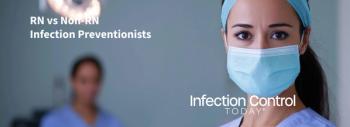
Check-In to Contagion: Infection Prevention in Waiting Rooms
Crowded waiting rooms can turn routine checkups into transmission hubs. Here’s how outpatient clinics can cut risk, starting at the front door, with smarter cleaning, hand hygiene, masks, and fewer extra visitors.
Recently, I found myself at a routine medical appointment on a Thursday morning. Arriving a few minutes early, I opened the clinic door and was immediately struck by the overwhelming number of patients crowded around the check-in desk and waiting area. A room originally designed to accommodate 15 patients now held over 30. Some were sharing seats intended for one, while others stood or leaned against walls. More than half had no place to sit. As I waited patiently for my appointment, I couldn’t help but reflect on the critical infection prevention measures needed in this space. A visit meant to safeguard health could easily become the source of a cold or flu a week later, especially with so many individuals coughing and sneezing in close quarters.
Outpatient areas are often tasked with managing a high volume of patients within short eight-hour days. These areas experience a steady stream of patients throughout the day, accommodating both scheduled appointments and walk-in visits. Unlike inpatient settings, these clinics frequently operate without an infection preventionist overseeing daily practices. Yet, the waiting room is a shared environment where infection control must be prioritized to protect both patients and staff. To maintain a healthy outpatient setting, several key strategies should be implemented in waiting areas.
First, cleaning and disinfection must be emphasized. Staff should routinely disinfect frequently touched items such as pens, clipboards, and counters. These solid, nonporous surfaces are easy to clean and can harbor pathogens if neglected. Depending on the size of the outpatient ambulatory center, clinics can see 30 to 100 patients a day. This means numerous hands coming into contact with the same shared items.
Hand hygiene is another cornerstone of infection prevention. Clinics should post visible signage encouraging hand hygiene and provide accessible hand sanitizer throughout the waiting area. Staff should be diligent about using hand gel between patient interactions, especially after handling items such as paperwork, credit cards, cash, or specimens collected from home (eg, urine and stool).
Furniture selection also plays a role in maintaining a clean environment. Soft, plush couches, while comfortable, are difficult to disinfect and better suited for a home than a medical setting. Instead, clinics should choose furniture and décor that are easy to clean and appropriate for patients who may be ill or have open wounds. While it may be unrealistic to clean after every patient, a thorough cleaning at the end of each day is essential. Additionally, a deeper clean once a week can address harder-to-reach areas such as wall art and artificial plants, which are common in many lobbies but often overlooked during routine cleaning. Practicality and cleanliness must take precedence over aesthetics.
Signage and mask availability are crucial, especially during times of high respiratory illness. Patients with symptoms should be encouraged to wear masks upon entry. In some clinics, separate waiting areas for symptomatic and asymptomatic patients are available, but these are becoming less common as space constraints grow. When possible, patients who are unwell should be encouraged to reschedule their routine appointments to protect others.
Limiting the number of people in the waiting area can also reduce the risk of transmission. While some patients may need assistance getting to their appointments or filling out medical forms, minimizing unnecessary visitors helps maintain a safer environment for everyone. At my appointment, I encountered many family members, including parents, spouses, and even a few children.
Finally, infection prevention protocols should be reevaluated during periods of high disease transmission, such as the influenza season or during outbreaks like the COVID-19 pandemic. Waiting rooms must adapt to reflect the current public health landscape in their communities.
Infection prevention doesn’t begin in the exam room; it starts the moment a patient walks through the door. By implementing practical preventive measures in waiting areas, clinics can uphold their commitment to health and safety for all who enter.
Newsletter
Stay prepared and protected with Infection Control Today's newsletter, delivering essential updates, best practices, and expert insights for infection preventionists.






